The harvest of fruits from the orchard and vegetables from the kitchen garden generally gives rise throughout the year and especially at the beginning of autumn, to the transformation of food in order to preserve them in jars. These glass jars can accommodate compotes, jams or vegetables and keep them for long periods, which is important especially during the winter when harvests are greatly slowed down. During my stay at a farm in Normandy in early September 2020, I spent a lot of time in the orchard harvesting apples, plums and blackberries then in the middle of their ripening period, in order to transform them into jars in preparation for the coming winter.
The sterilization of the jars is an important step in the preparation of compotes, jams and jellies but also for any jars preserving vegetables. It is important that the container is clean and that possible bacteria have been removed from the glass surface and the lids. Sterilization and sealing allow, in addition to sugar, oil, vinegar or salt, to preserve fruits and vegetables over long periods without mold or fermentation developing. It is also very important to store the jars in a cool, dry place away from light.
Sterilization takes place in two stages. The first is to put in a large pot of boiling water, the jars with lids and seals for about ten minutes. Take them out of the water with pliers and place them upside down without touching them too much on a clean cloth. The second step is to immerse the jars filled with fruits, compotes, jams, vegetables or other in a casserole filled with water to the limit (a line drawn inside the casserole dish). So that the jars do not collide during cooking, put a cloth between the jars, also immersed in water. Cook over high heat until the casserole whistles, reduce the heat and then cook again for thirty minutes. Remove from heat and let the jars cooling.
Once the jars of jam, jelly or compotes are full, it is also important to turn them over. This allows the dense contents to be positioned at the opening of the jar to avoid too much air passage and ensure a good seal.
Another important element in the preparation of compotes and jams: the copper jam pan. Its flared shape promotes water evaporation and the copper quickly absorbs heat and transmits it evenly. Copper also promotes the release of pectin molecules contained in fruits during cooking and which help retain aromas.
Apple compote
- First we harvest the apples. The ideal is to have around 3kg in total to fill the copper jam pan. Fruit that has fallen from trees and is slightly damaged can be picked up first before starting to harvest from the trees. This avoid to much waste of fruits.
- Peel and cut the apples into small squares.
- Pour into the copper jam pan.
- Add a little water, a little lemon juice and depending on the fruit a few spoons of sugar. If the fruits are naturally sweet, adding more sugar is not necessarily necessary.
- Cook over high heat, stirring regularly, until the fruit begins to melt.
- While cooking, sterilize the jars.
- Once the fruit begins to melt, fill the jars using a funnel.
- Once the jars are full, close them well, turn them over and let them cool.
Apple and plum jam
- Harvest the apples and plums. Usually we mix 1/3 plums with 2/3 apples.
- Peel and cut the apples into small squares.
- Cut in half and remove the cores from the plums.
- Pour into a copper jam pan.
- Add a bit of water, a little lemon juice and cook over high heat, stirring regularly, until the fruits begin to melt.
- Add the sugar and mix well. For 1kg of juice, add about 750kg of sugar.
- While cooking, sterilize the jars. For jars with sugar, it is not necessarily necessary to use jars with seals. Simple jam jars with lids work very well.
- Once the fruit mixture is relatively homogeneous, which can take a good hour, fill the jars using a funnel. If any pieces of fruit remain, you can either keep them as they are, use a blender or mash them with a fork.
- Once the jars are full, close them well, turn them over and let them cool.
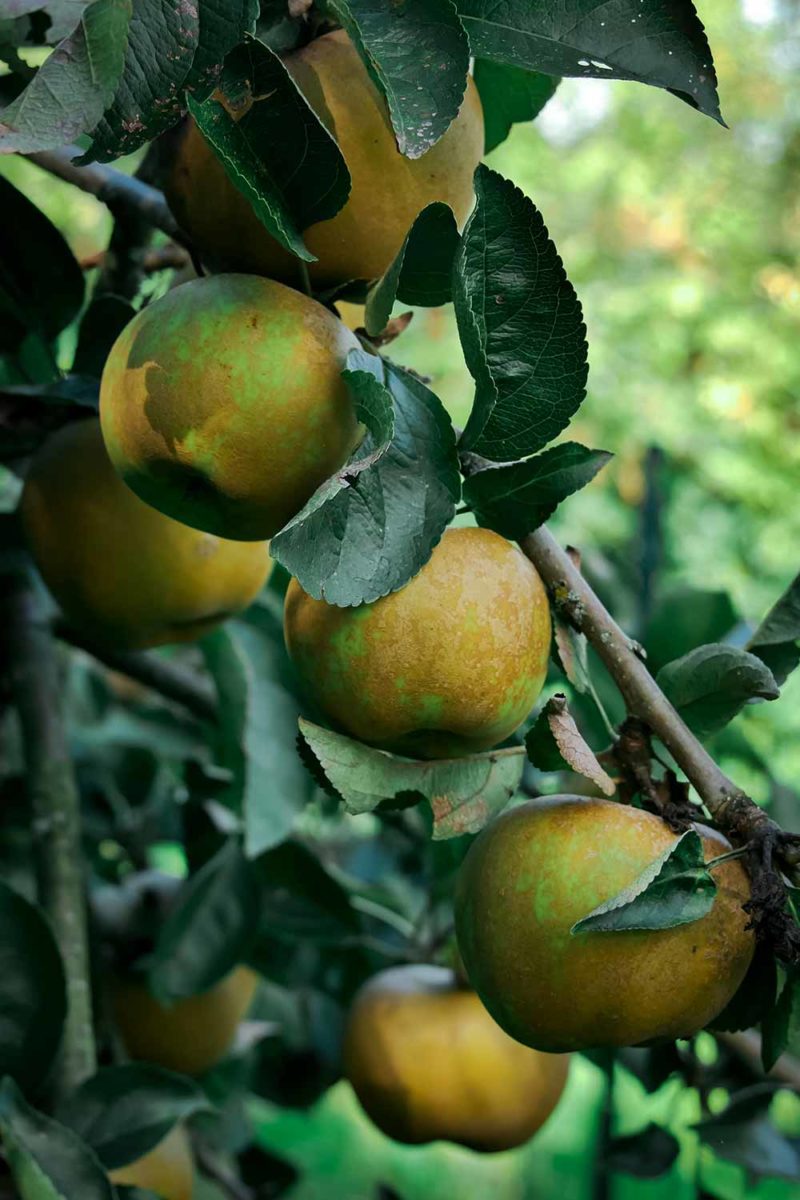
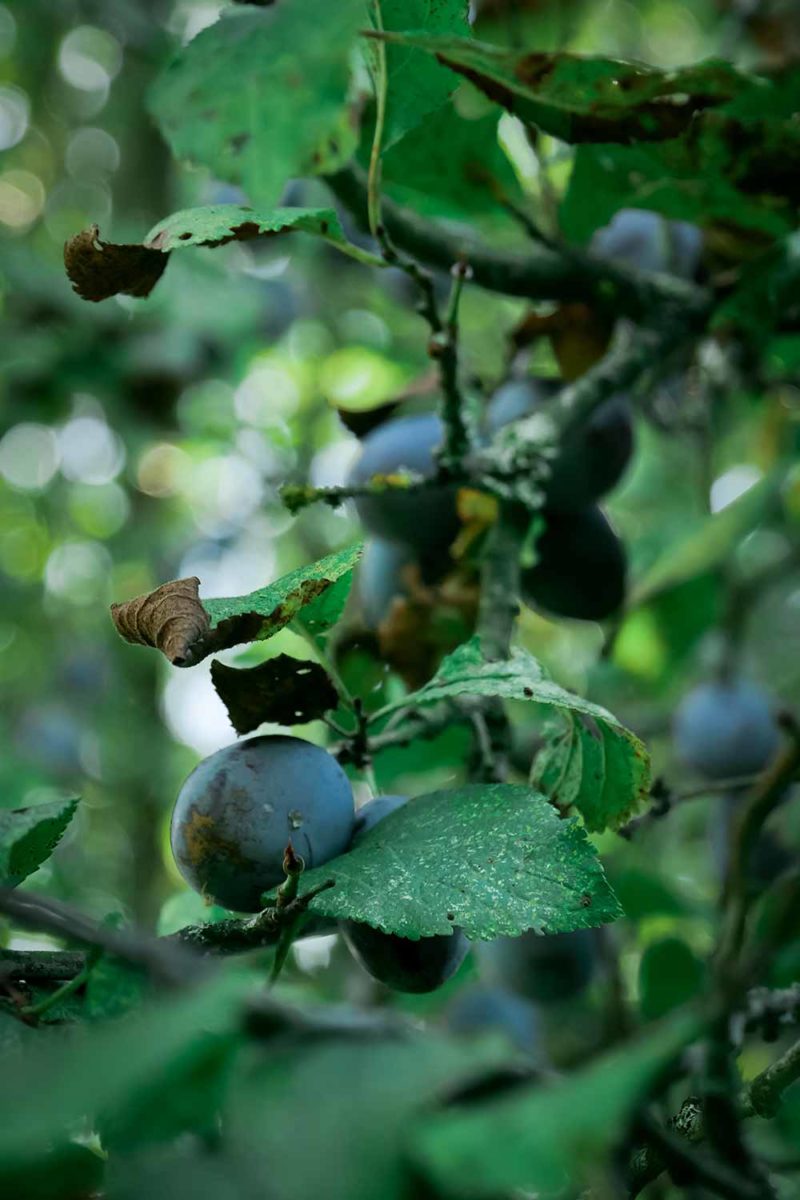
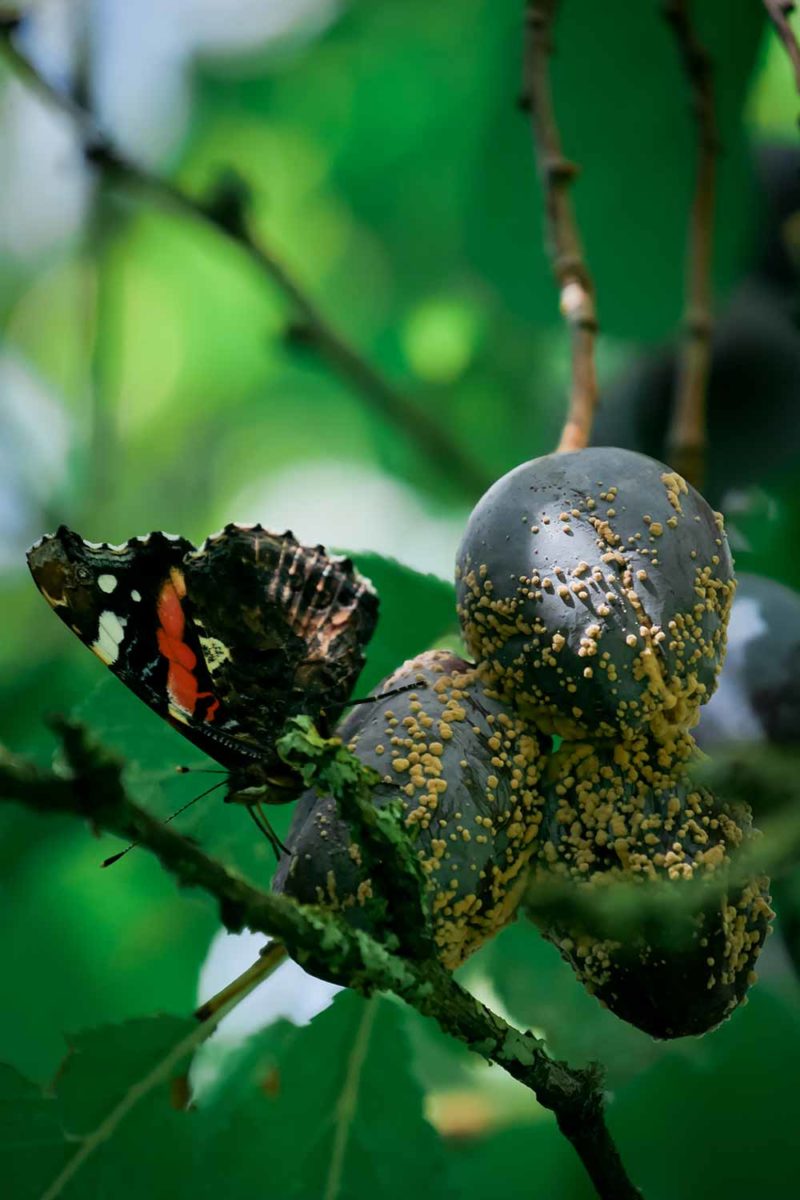
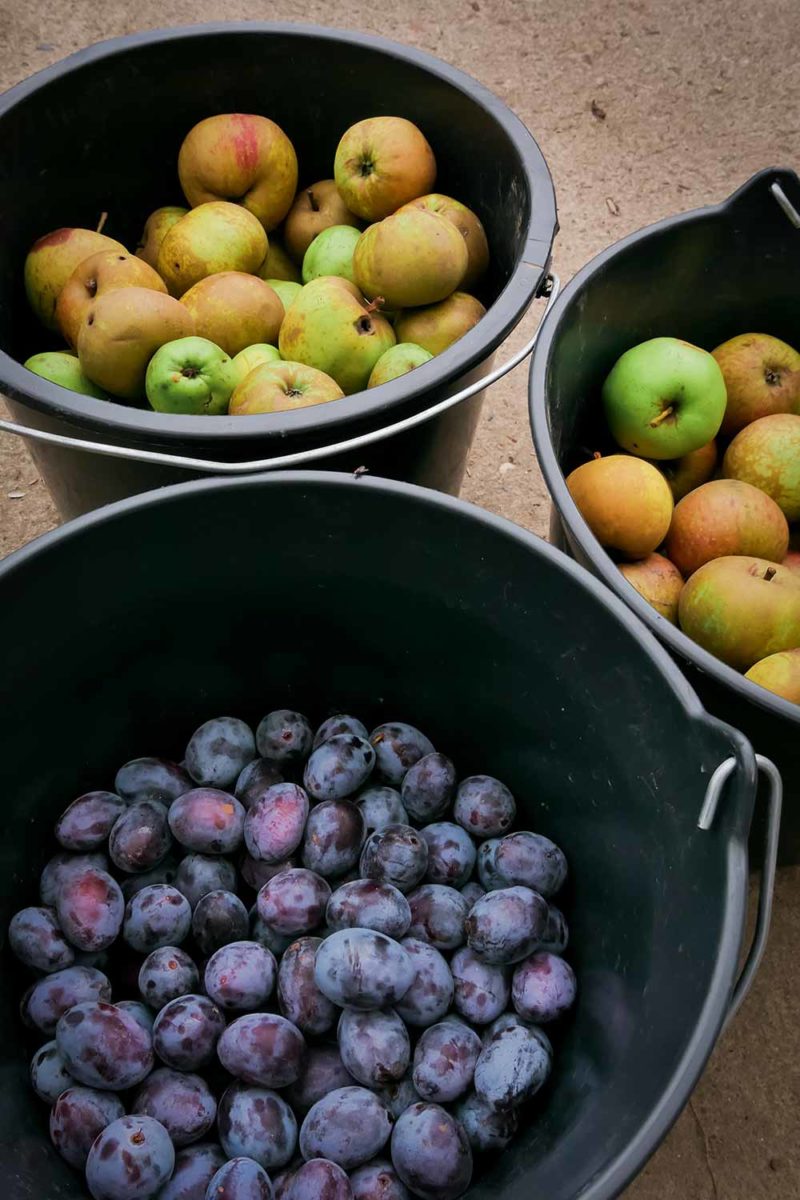
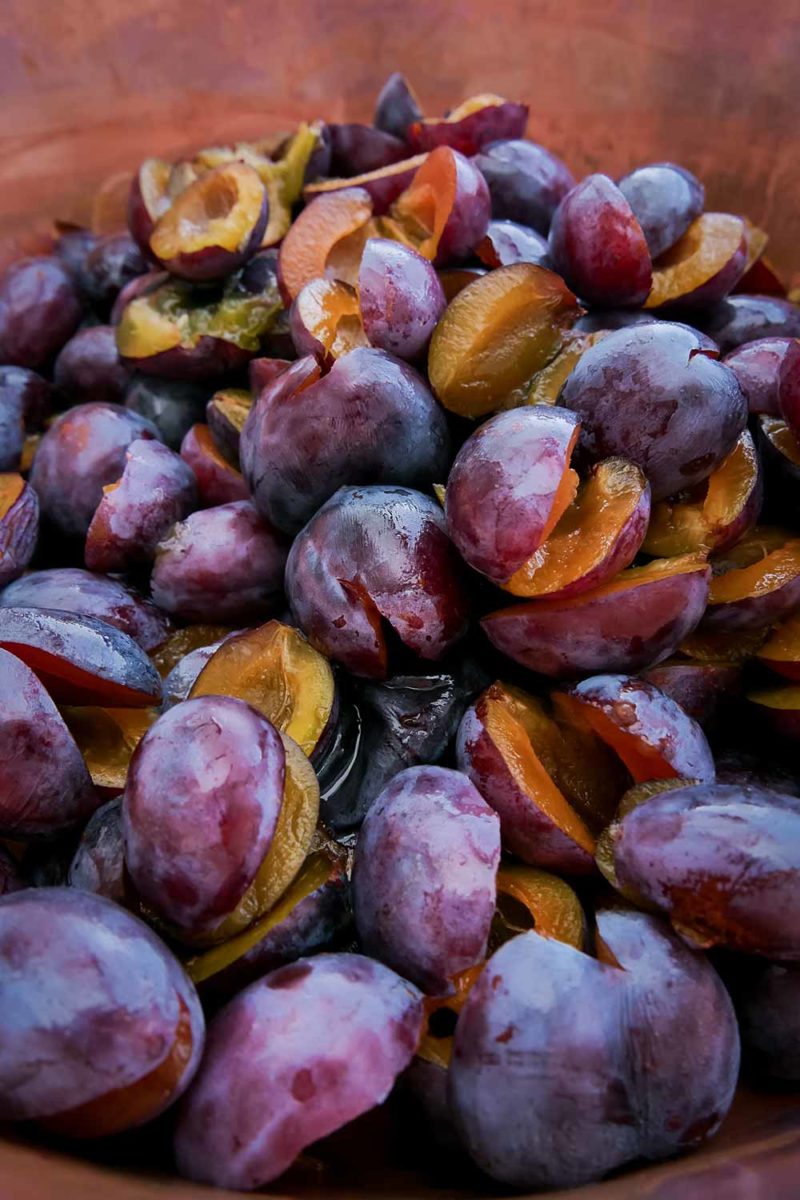
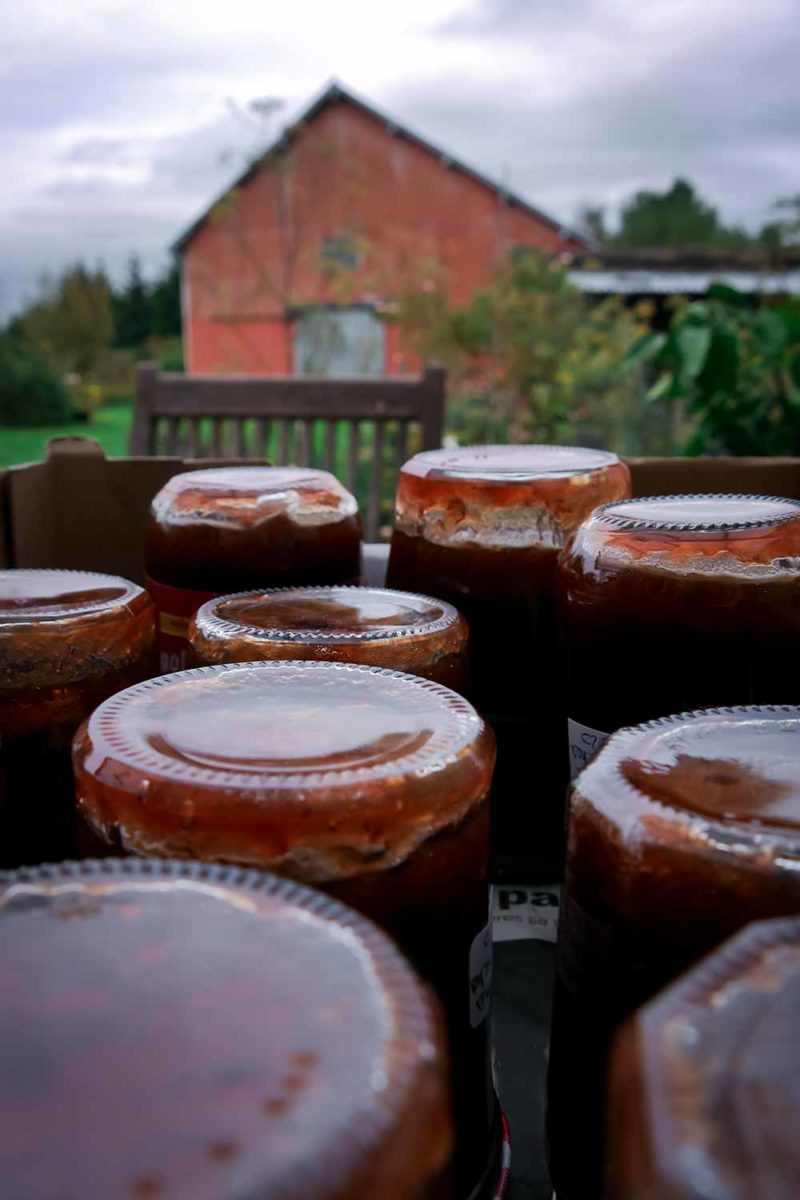
Harvest of apples and plums in Normandie in Louis’ orchard of the farm where I was wwoofing. Butterflies are particularly attracted to rotting fruit.
Blackberry jelly
- Harvest around 3kg of blackberries. Avoid harvesting the fruit too low from the trees to avoid any risk of disease transmission via animals. Blackberry shrubs just at the edge of busy roads or agricultural fields should also be avoided due to pollution.
- Pour into the jam pan and cook over high heat.
- Let the fruits burst, squeeze them to bring out the juice.
- Sift the mixture using a juice bag or juice extractor to remove the seeds. Watch out for blackberry juice which stains very quickly.
- Weigh the juice obtained on a scale and cook again with a little lemon juice.
- Add sugar. For 1kg of juice, put 750kg of sugar.
- Sterilize the jars while the mixture is cooking.
- Add about four teaspoons of agar agar with a little cold water and mix well. Agar agar is a red algae which, once reduced to powder and incorporated into a preparation, allows it to gel.
- Bring to a boil and then stir for about ten minutes until the agar agar mixture is gelled.
- Put the mixture in jars, turn them over and let them cool.
Dry fruits
Drying the fruit also helps keep them longer. Plums and apricots are eaten particularly well dry, but apples, mangoes or figs are also good dried.
To dry the fruits and remove the water they contain, cut them in half and remove the stones for the plums and apricots or peel, pit and cut into very thin slices for the apples and mangoes.
There are different techniques for dehydrating fruit. Use an electrically operated food dehydrator. Or let the heat of the sun or the fire do the job. The sun is used by placing the fruits on racks (solar dryer in the form of superimposed trays), mumps facing the ground, first of all in the shade for one day. The next day you have to position the racks in the sun and leave them there for a week, turning the fruit every day. The use of the fire is done by using either the oven or the fireplace and by positioning the fruits on trays in the oven or just in front of, or above, the fire. Leave them for several hours then expose the fruits to the sun outside on a clean cloth for four days.
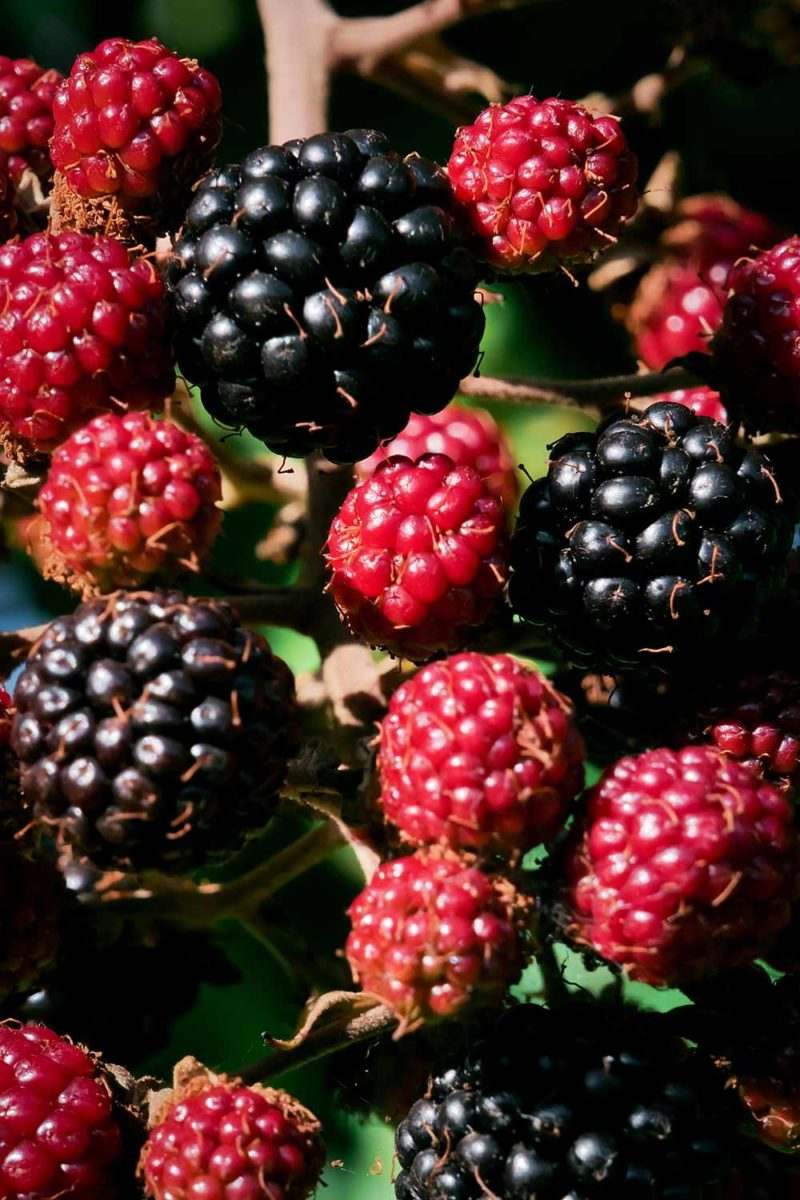
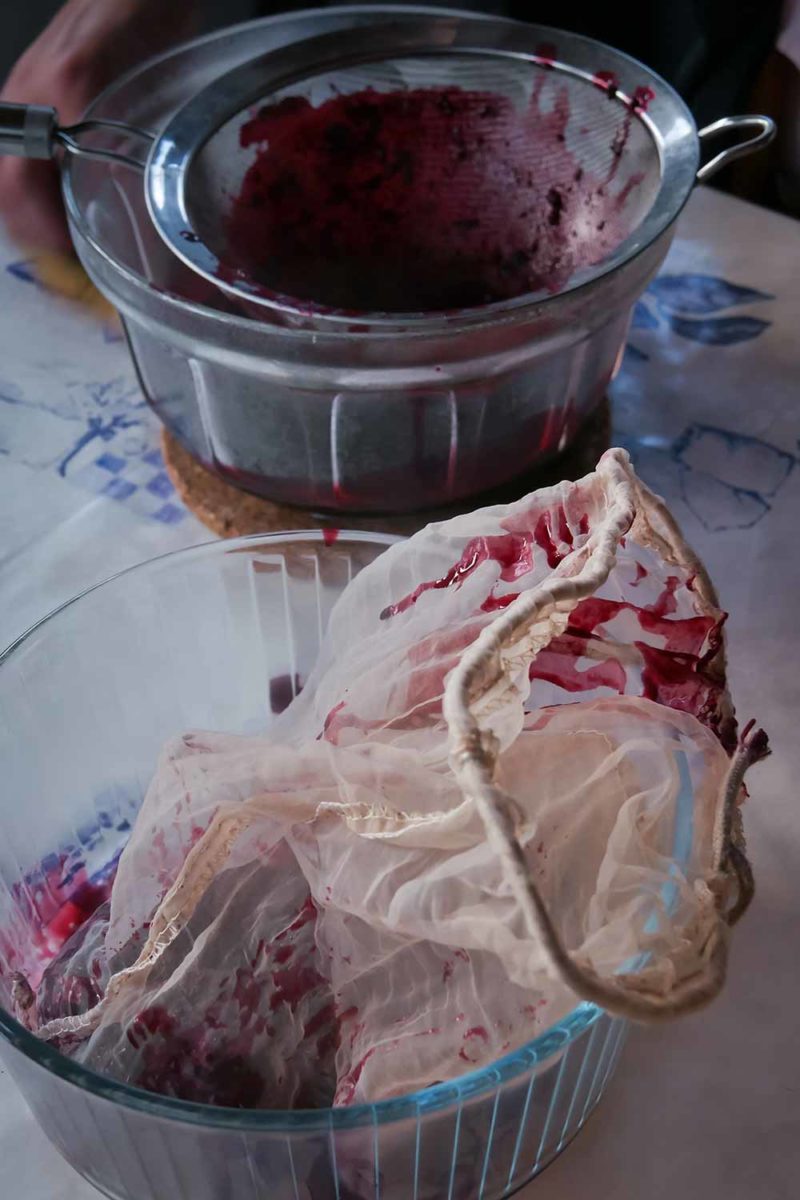
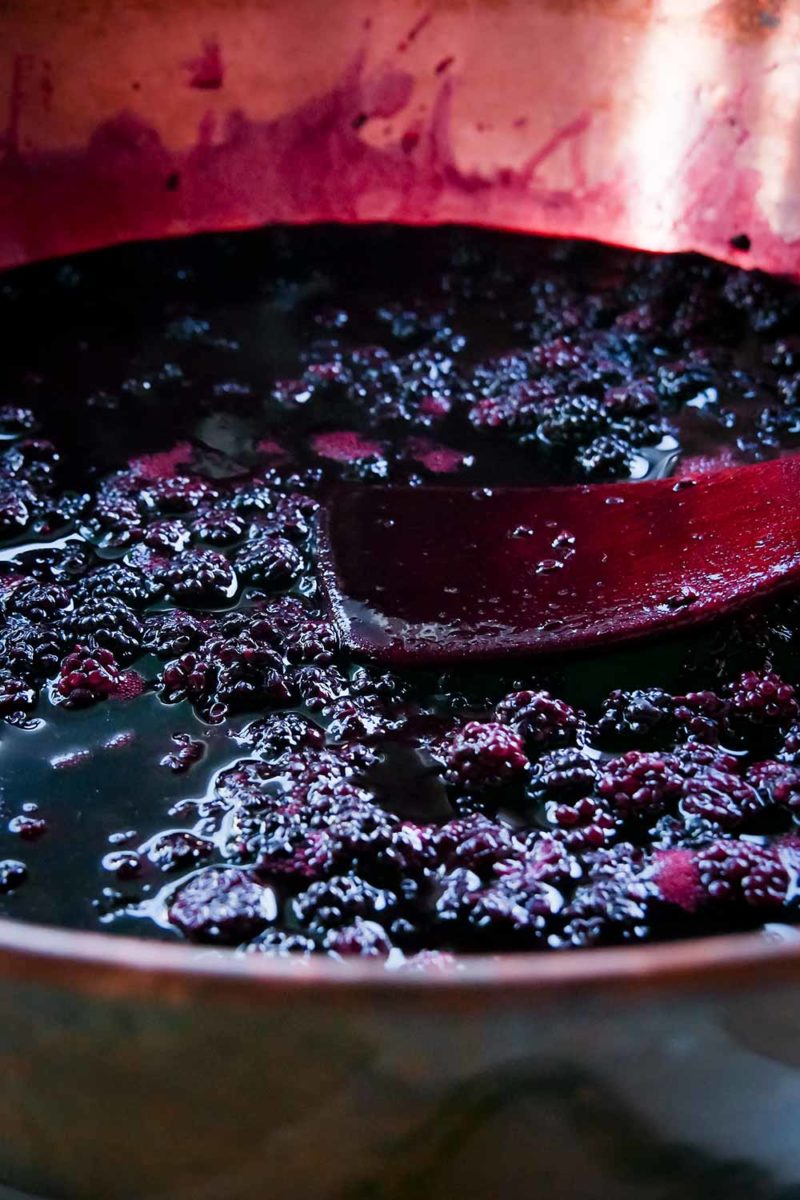
Harvest of blackberries in early September. Half of the fruits are not yet ripe. Using a juice bag makes it possible to avoid having to use electricity, but its is not very practical and do not extract all of the juice.
Note: In order to respect the right to privacy and anonymity on the internet, the names of people have been changed.
